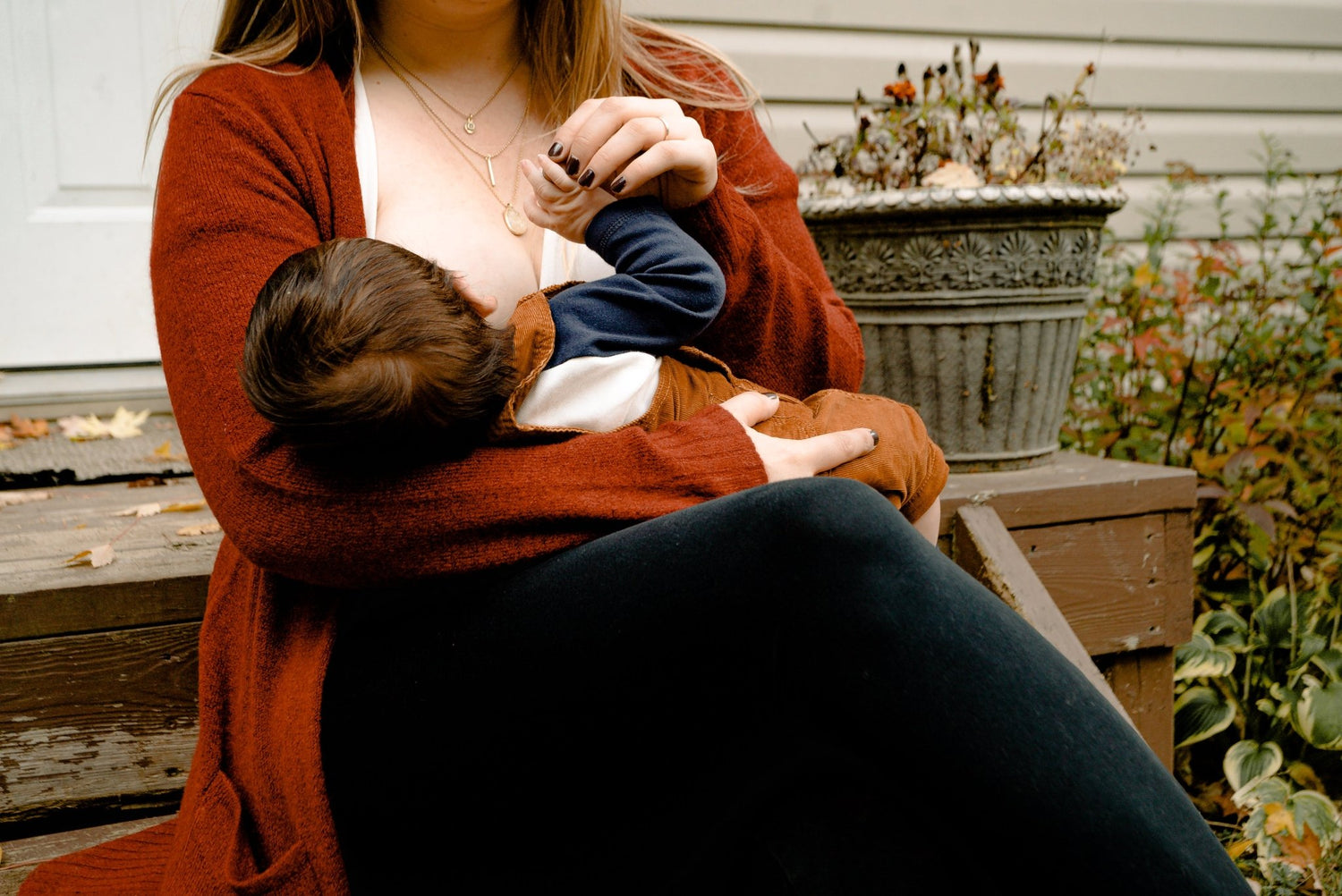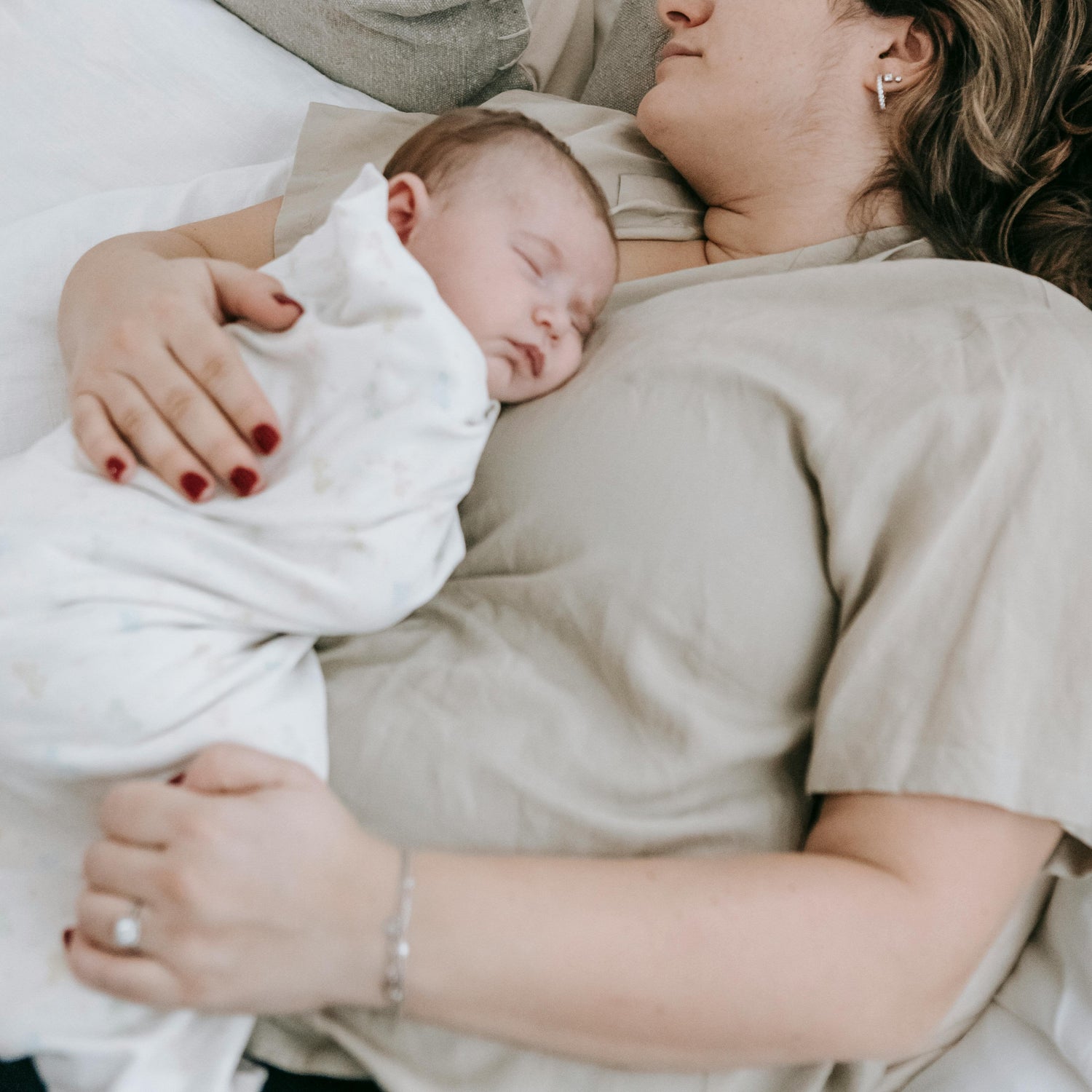Day-Night Rhythm, what is it?
The question does not arise for us, but for our newborn babies. In the womb there is no real light and dark for the little ones, no day and night. They sleep when they are tired and wake up when they have had a good night's sleep. In the last few weeks of pregnancy, however, an infant actually learns a rhythm of waking and sleeping phases in the womb, but by no means a day-night rhythm.
|
Table of contents: 1. Babies' sleep patterns |
1. Babies' sleep patterns
Quite exhausted after birth, many of the babies sleep long and hard and initially maintain their learned sleep rhythm. Small children generally sleep more than adults and they need the extra sleep too. Therefore, any bedtime should not be forced, on the contrary, if you miss the moment and misinterpret the sleep signs, it can be difficult to fall asleep - but more on that in another article.
2. 5 tips to introduce the day-night rhythm
It goes without saying that it is exhausting for us parents when the little ones turn day into night and we actually want to sleep. Therefore, supportive tricks can be used to show the child in the long term that the night is meant for sleeping. However, this does not mean that a child will no longer wake up during the night. Needs such as hunger, closeness or full diapers should always be satisfied. After and during the satisfaction of needs, however, the child should be shown with certain behaviors that it is bedtime.
2.1. The learning process
It is important to know that everything is a learning process and so the day-night rhythm is also a part of children's lives that they first have to learn. This is due to nature, among other things, and it cannot be influenced. A lot has to do with brain maturity. At around one month, a certain day-night rhythm begins to emerge on its own and patterns can be identified as to when the babies are tired in the evening and wake up during the night.
2.2. The dark

Nothing separates day from night like darkness. You can take advantage of this. It is only dark at night, so it is said that if the child is tired during the day, no darkness should be artificially created. The child should sleep in daylight, preferably outside, for example in a stroller.
2.3. Not too loud or too bright
During the day it is not only bright, but also noisy. We should keep this distinction and be calm and quiet at night. If the child wakes up and needs to be satisfied, it should be done calmly. But the light shouldn't be too bright either. A dimmed night light, for example, is suitable for this. This prevents the baby from waking up properly.
 2.4. Introduce an evening routine
2.4. Introduce an evening routine
Going to bed in the evening should also differ from the rest of the daytime naps in its process. For example, pajamas are only put on in the evening, something is read/sung to, fed and put to bed. In any case, this evening routine should be different from the rest of the naps and should remain the same in sequence. Children are guided by repetitive processes and find it easier to do so.
2.5. Don't turn night into day

If the baby suddenly appears fit and well rested during the night, then you should not tend to turn night into day. As already mentioned, children always follow the same processes. So if you get up with the child at night and play with it, for example, you may unintentionally convey the wrong understanding of night and day. Quiet activities such as cuddling or singing are the better alternative here.
3. So much for the theory
I also had the problem that we didn't have a night-day rhythm at the beginning. Leon slept when he was tired and was awake when he was awake 😉 At the very beginning, there was no real day-night rhythm for me, I just slept when he slept. I mean, for the first few weeks he actually slept a lot (only on top of me) and woke up (crying) every few hours, but that's the thing with babies 🙂
However, what I did from day 1 was a consistent evening routine. For us, it looked like this: breastfeeding on the sofa (no breastfeeding while falling asleep), then changing diapers and putting on pajamas together with dad in the bathroom and then we went to bed together with me in the darkened room with the pacifier (which I had to hold on to non-stop so that it doesn't fall out). The routine changed from time to time over time, but we still keep the general structure to this day – only breastfeeding was dropped, for example, or now he also sleeps in his bed and no longer on me, etc. Looking back, I think that was one of the most important decisions to introduce this routine with regard to a regulated day-night rhythm. It took a while, but I noticed that Leon understands that when this sequence takes place, it's time for bed. As a side tip: I deliberately did not use sleep breastfeeding because I always wanted to make sure that I could maintain the routine I had introduced for a very long time. Breastfeeding is (usually) only possible for a limited time and if this method is used to fall asleep, this is of course an essential part of the evening routine that cannot simply be replaced or omitted - that's why I didn't do it in the first place 🙂 I tried that he falls asleep with the pacifier, it is questionable whether that is the better solution, for me it was at the moment.
The tip I failed at was not darkening the room during the day. I'm actually almost desperate about this. When it became apparent that the waking phases were becoming more and the sleeping phases more predictable, I started getting Leon used to not sleeping on me anymore - but I never let him cry! So I made a plan. The plan included: a nursing pillow, a bassinet, a blanket, a box, and a rollaway bed. Actually, there were several desperate plans. OK, here we go! I knew it should be light during the day, my child should understand that it is day. What I also wanted to avoid at all costs was putting Leon in his bed in the bedroom; My train of thought: The bed is only there for the night and should only be associated with the night, so never put it in during the day! So I started putting Leon to sleep on the sofa in my bright room, surrounded by the nursing pillow. And yes, I used sleep feeding for that 😉 It worked well until he stopped sleeping while breastfeeding! After that nothing worked! And I noticed that he does not calm down when it is bright and is easily distracted by too many things. Sleeping in the evenings was going pretty well now, so I figured, OK, maybe I should shade it out so he knows it's bedtime. Said and done. Experiments looked like this: In the living room in the bassinet with a light blanket over the entire bassinet so that it was a bit darker. On the sofa with a box over his head. The box was constructed in such a way that there was a cut-out for the neck and air holes - when I read it myself now, I really think it was crazy, I was really desperate! At some point I then went over to putting him in the extra bed and pulling the scarf a little – so that it wasn't "dark at night" but not "bright as day" either. With many crazy ideas I tried to make sleeping easier, but still to show him that there is somehow a day-night rhythm. Incidentally, the one with the cardboard worked best 😀 But in general, this rhythm worked itself out over time and the fewer naps there were, the better it got in general. Today Leon sleeps during his afternoon nap in his bed, in the bedroom, in a completely darkened room, identical to sleeping at night and he has nevertheless developed a completely normal night-day rhythm.
I have consistently followed tips such as dimmed lights and quiet at night, no games, fun and action. Today I think I stressed myself too much. I always thought "Oh my god, this will never change or get better, it will always be the way it is now". But that's not how it is! I've only ever thought about the here and now, I'm basically very pessimistic. But children develop, and fast! And as they develop, so does their sleep pattern. At some point they also begin to develop a certain understanding of things. And I think a day-night rhythm basically just develops by itself because we set an example for the children - it's kind of an inveterate routine of us adults that we pass on automatically.




